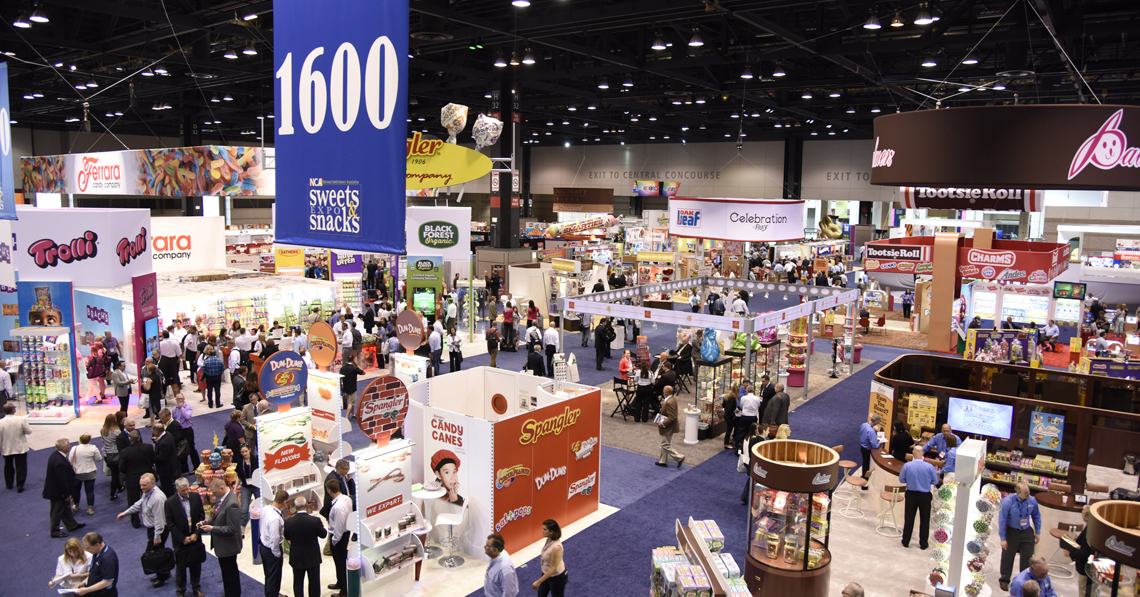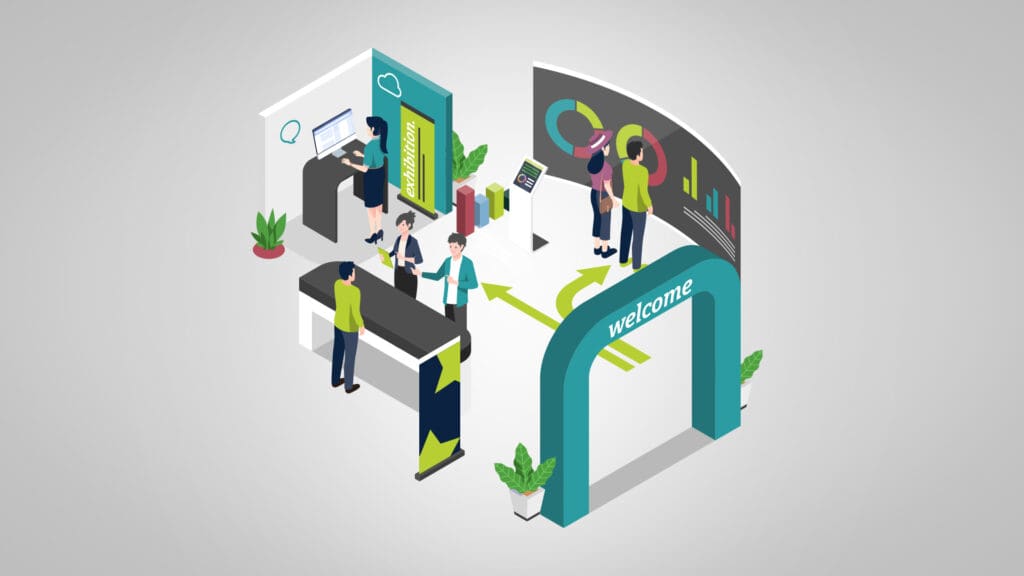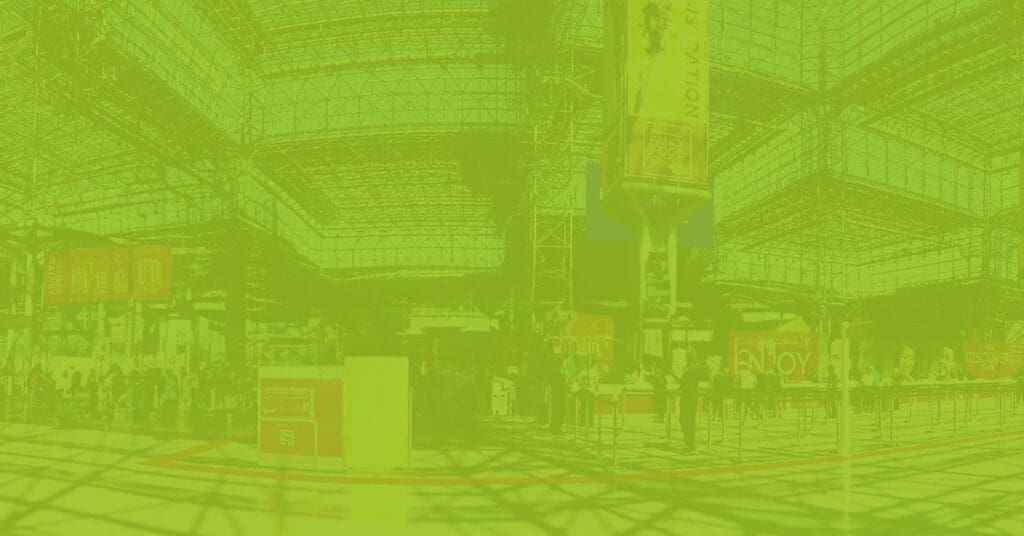
B2B Trade Show Trends
In this edition of Plain Talk, we’ll discuss B2B trade show trends. We hope you’ll gain valuable insights that you can apply to your B2B marketing regimen.
- The Changing Face of the B2B Trade Show
- Virtual Reality and Augmented Reality
- Your “Guest” Customer
- Sneaky Stuff
- Personalized Media
- Get Expert Help Understanding B2B Trade Show Trends
If you live in the world of B2B marketing, we’re guessing you’ve spent some time “working a trade show.” You know what we’re talking about. The mad dash to get set up. The meetings. The sore feet. The one thing you always forget to pack in your suitcase. We’ve been there. But despite the challenges every trade show brings, they can be the lifeline to a healthy pipeline of qualified customers and a great way to energize existing ones.
The Changing Face of the B2B Trade Show
According to some sources, the first “trade show” was held in London at the end of the Industrial Revolution in 1851. The preceding years saw a huge shift in how businesses operated, how things were made, and how they were sold. But the idea of the first trade show was not unlike the one we head to today to connect with potential customers, show off our innovations and move products.
While today’s trade shows are significantly different—and definitely smell better—those fundamentals have not changed. But a lot has. With new show technology, scaling your pipeline, integration of marketing and PR opportunities, leveraging social media, and closing deals, we have a lot more to accomplish in two or three days than ever before. So, what are some of the proven and emerging trends to maximize ROI from your investment in trade show activities?
Common technology trends: This isn’t that article
Before we move on to trends, we want to tell you what we aren’t addressing: RFID, card scanning, stuff like that—the things that tactically put a lead, qualified or not into your pipeline. There are a million articles about this pretty common technology. Instead we want to talk about more useful tricks of the trade.
The human customer
We all love our customers, but in the fast-paced, goal-oriented environment of the trade show, we need to remember that customers are human beings. That same buyer in front of you wearing a suit, relishes weekends with his or her kids, obsesses over Game of Thrones or the latest binge-worthy program on Netflix and dreams of being a scratch golfer. They are human, aspire, want to be entertained and are emotional creatures, not just rational buying machines.
Sales people are great at hitting these emotional high notes. The problem is that your competitors have great sales people too. It’s the cost of entry to have and keep insightful, relatable sales folk. So, the competitive edge must be found in how the brand/company can amplify those connections.
The rise of experiential strategies
Therefore, it’s no surprise that the most significant macro trend in trade shows is the meteoric rise of experiential strategies. To keep ahead of your competitor, it’s no longer enough to have your product in your booth accompanied by smart salespeople, data sheets, and a bowl of Hershey’s Kisses. (Full disclosure: Hershey is a client, and we wholeheartedly endorse you keeping the bowl of Hershey’s Kisses.) Growing brands are turning on the emotional appeal of their trade show customer experience. They’re not just selling but surprising and delighting potential customers to create memorable connections. So, what are some of the trends that can turbo-boost your B2B trade show experience?
Virtual Reality and Augmented Reality
These two technologies are often mistaken for one another, but they are different. Both allow you to change or enhance the “reality” that your customers are experiencing, but here’s the difference:
Virtual reality
Virtual reality, or VR, is a completely immersive technology that changes everything that your customer sees and hears and allows them to interact with an artificial environment. It’s a fake, digital world. VR requires things like goggles and other sensors that let your customer slip into this artificial world and have an experience that might not be possible in the real world. Cool for video games, but trade shows? Sure! Here are a few scenarios:
- Manufacturers can create a virtual world where customers can examine, take apart, and operate heavy machinery.
- Engineers can test tolerances of different materials in a virtual lab.
- Tourism operators can take you on a virtual tour of a new cruise ship or any destination in the world.
- An environmentally friendly chocolate brand can let you visit their state-of-the-art, sustainable cacao operation in South America to share their innovations.
Basically, if you can dream it, it can be built in VR. Better still, these experiences are often projected on a wall or displayed on a big-screen TV to draw in curious onlookers who may want to try the experience as well. We’ve followed VR since its inception, and today, it’s no exaggeration to say that it’s a “wow” experience that customers remember and talk about. As an example, we loved the function of Wessels virtual warehouse by Arch Virtual.
Augmented reality
Augmented reality, or AR, is not really immersive. Instead, it takes an object and puts it into your reality, OR it takes you and puts you in the object’s reality. The difference is that to see the experience you need a screen. A cell phone, big screen TV or projector is needed to watch the full interaction. If you remember Pokemon Go, the arguably annoying but wildly popular AR game that had people all over the country using their phones to find and collect Pokemon characters, that was AR. It’s no surprise that businesses using AR are often leveraging the technology to “gamify” the trade show. Just make it fun and memorable. But there are fun, practical applications as well. Things like 3D realization, process illustration and the like can be done experientially with AR. Check out Tyco Fire Protection’s great use of AR here.
Your “Guest” Customer
Another growing trend in trade shows is the “guest customer.” This trend is about personalizing the trade show experience for customers to make them feel both welcome and comfortable. Imagine if your mom ran your trade show booth. It starts with eliminating the barriers, countertops, tables, whatever form is between you and the customer and creating comfortable spaces for your guest to experience your wares and your people. Brands are creating huddle spaces, phone charging stations, etc. to enhance the comfort of guests and get them into their booths.
This can get really creative. Have you ever bought a cup of coffee for a customer so you can chat? How about having a barista in your booth making custom coffee drinks? Do you normally put out a bowl of gum or granola bars at your booth? How about instead incorporating fresh baked chocolate chip cookies? You get the idea. Much like breaking bread together at a client dinner, these types of more intimate experiences break down barriers and ultimately help your sales folk win business.
This approach means that we are seeing brands place significantly less “equipment” in their booths (i.e. machinery, product, etc.) to make room for the customer’s comfort and for meaningful interactions.
Sneaky Stuff
Sometimes, the most effective tools you can use to make yourself memorable at a trade show are the ones the customer isn’t even aware of. Here’s a little secret. The strongest memory trigger of our five senses is actually smell. For years, very smart marketers have quietly been using scent atomizers or other fragrant tricks in their booths to make themselves more memorable. If you’ve been to Las Vegas, you’ve probably witnessed this without knowing.
Casinos/hotels like Bellagio, Wynn and others disperse subtle fragrances in their properties—not proprietary stuff but common scents like lavender, vanilla or chocolate chip cookies. Why? When you go back home and experience those fragrances in your normal life, they trigger memories of your experience in Vegas. The same applies in trade shows. This is actually a pretty inexpensive trick as well.
Personalized Media
Another common trend in trade shows is the usual parade of paid advertising opportunities that you invariably get bombarded with as a trade show nears. You know, inside the cover of the show guide that nobody ever uses (or increasingly in the show’s app), the signage, the presenting sponsorships, cocktail hour sponsorships, etc. Some of these opportunities are well thought out and really fine if you have the budget. What we really like and are seeing more of is hyper-targeted media.
The best example is not new but still not often used correctly. Geofencing. Geofencing has been around for a while. Basically, a geofence draws a box around the convention center and serves your ads to people’s devices inside that box. So that’s pretty cool. What’s become more interesting is combining a media buy like this with remarketing so you can follow the prospect home. It works like this. You serve someone an ad in the convention center. Technology identifies the mobile or laptop devices you serve ads to. Then when people go back home, you can continue to serve follow up messages to them after the show. If you are trying to drive traffic to a post-show landing page, this is a great layer to your plan.
Get Expert Help Understanding B2B Trade Show Trends
While these are just a few of the trends making trade shows a better and more effective tool for B2B marketers, they may not all be for you. Our advice in planning your next trade show is to start with the customer at the center of your experience. Their comfort, entertainment and experience. Brands that take a human approach to show marketing are reaping the rewards of better customer connections and improved sales.
The B2B marketing teams at PriceWeber have helped plan countless successful trade show activations for national and global clients. If you have any questions, we hope you’ll drop us a note or give us a call at 502-499-4209.
Our Articles Delivered
Signup to receive our latest articles right in your inbox.






